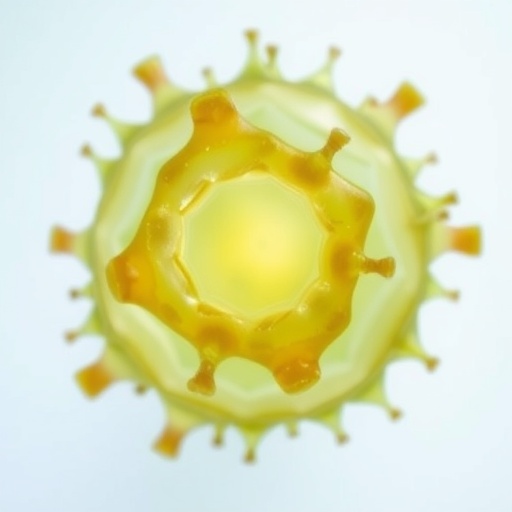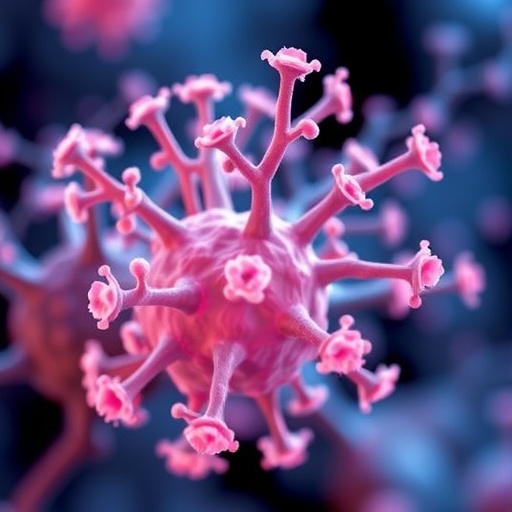PROTECT YOUR DNA WITH QUANTUM TECHNOLOGY
Orgo-Life the new way to the future Advertising by AdpathwayIn a groundbreaking advancement in materials science, researchers from Japan and Taiwan have unveiled a novel approach to the anisotropic atomic-layer etching (ALE) of hafnium oxide (HfO2) films, excluding the toxic halogen-based chemicals traditionally utilized in such processes. This innovative technique not only achieves unparalleled precision in etching but also promotes environmental sustainability, making it a significant breakthrough for the semiconductor manufacturing industry.
Hafnium oxide, HfO2, has garnered considerable attention within the realm of microelectronics due to its remarkable properties. Characterized by a high dielectric constant, excellent thermal stability, and a wide band gap, HfO2 is an exceptional candidate for next-generation semiconductor devices. These features, however, present notable obstacles for precise and smooth etching of HfO2 films, which are critical for the miniaturization required in modern electronic components.
The conventional methods employed in plasma-enhanced ALE of HfO2 typically rely on the use of harmful halogen gases, including fluorine and chlorine. While these gases facilitate the etching process through physical and chemical reactions, they also contribute to environmental concerns, acting as greenhouse gases and posing toxicity risks. The success of the new halogen-free method was recently documented in the journal Small Science, marking a promising step toward sustainable semiconductor manufacturing practices.
In their pursuit of a cleaner etching process, the research team, led by Professors Shih-Nan Hsiao and Masaru Hori from Nagoya University, innovatively combined N2 and O2 plasma treatments to create a two-step etching process. Initial experimentation involved bombarding HfO2 films with N+ ions under a controlled environment, facilitating the bonding of nitrogen atoms to the oxide film. This crucial first phase sets the stage for a subsequent O2 plasma treatment, which effectively removes nitrogen-rich surface layers, leading to the emission of volatile byproducts without the use of halogen compounds.
This cyclic etching method demonstrates significant advantages when compared to traditional processes. Studies reveal that the generated byproducts from the new technique exhibit high volatility, minimizing the risk of residue buildup on chamber walls, which can subsequently impair the performance of electronic devices. Such efficiency in byproduct management is a noteworthy aspect of the new approach, ensuring that the integrity of the etching environment is preserved.
Throughout the course of their research, the scientists meticulously adjusted the energy levels of N+ ions using radio-frequency power applied to the bottom electrode. This adjustment was instrumental in achieving a precise etch depth per cycle, consistently ranging between 0.023 and 0.107 nm. This level of control over the etching process symbolizes a crucial advancement in the capability for engineers to design and fabricate semiconductor components that demand increasingly tighter tolerances.
In addition to their innovative etching process, the researchers employed advanced in situ analytical techniques such as attenuated total reflection Fourier transform infrared spectroscopy and X-ray photoelectron spectroscopy, which proved invaluable in elucidating the underlying reaction mechanisms during the etching. These analyses confirmed the constant formation of Hf-N bonds via a ligand exchange mechanism, whereby nitrogen atoms effectively replaced surface oxygen atoms when exposed to nitrogen plasma. This scientific insight into the reactions was pivotal for optimizing the etching framework further, strengthening the reliability of their groundbreaking results.
Moreover, the effective cyclic nature of this new etching method also facilitated enhanced surface smoothing for HfO2 films. The research demonstrated a reduction in surface roughness by up to 60% after just 20 etching cycles. Such surface refinement is critical for the fabrications of semiconductor devices, ensuring maximal efficiency and performance, which is particularly vital for applications requiring ultrathin structures.
The implications of this halogen-free etching process extend far beyond mere technical achievement. With rising global emphasis on sustainable manufacturing practices, the ability to perform atomic-layer etching at room temperature without toxic byproducts presents a significant ecological advantage. By significantly reducing energy consumption associated with thermal processes and minimizing environmental impact, the newly developed method aligns with broader industry goals towards greener technology.
Professors Hsiao and Hori indicate that this achievement could influence various applications across the electronics landscape. As the semiconductor industry progresses towards integrating two-dimensional materials and advanced nonvolatile memory technologies, HfO2 remains a leading material for device architectures. Furthermore, as device scaling continues towards the atomic realm, the ability to achieve such precise control over material processing stands to redefine the possibilities within modern electronic fabrication.
The capability of this innovative etching technique to produce smooth, uniform surfaces suitable for ultra-thin applications solidifies its potential role in advancing electronic device performance. As the push for smaller, more efficient components increases, this halogen-free method exemplifies the intersection of scientific innovation and sustainability.
In conclusion, the research conducted by Hsiao, Hori, and their collaborative team marks a consequential step in the quest for sustainable semiconductor manufacturing, paving the way for eco-friendly yet efficient production techniques. By moving away from hazardous halogen gases and traditional high-temperature processes, this discovery not only enhances technical capabilities but also aligns with a global initiative toward environmental responsibility in the rapidly evolving field of electronics.
Subject of Research: Halogen-Free Anisotropic Atomic-Layer Etching of HfO2
Article Title: Halogen-Free Anisotropic Atomic-Layer Etching of HfO2 at Room Temperature
News Publication Date: 22-Jul-2025
Web References: Small Science
References: None
Image Credits: Shih-Nan Hsiao
Keywords: Hafnium oxide, atomic-layer etching, halogen-free, semiconductor devices, sustainable manufacturing, N2 plasma, O2 plasma, precision etching, materials science.
Tags: anisotropic atomic-layer etchingatomic-level etching techniqueenvironmental sustainability in semiconductorshafnium oxide semiconductor applicationshalogen-free etching methodshigh dielectric constant materialsmaterials science advancementsmicroelectronics innovationsnext-generation semiconductor devicesprecision etching technologiessemiconductor manufacturing breakthroughstoxic chemical alternatives in manufacturing


 7 hours ago
13
7 hours ago
13





















 English (US) ·
English (US) ·  French (CA) ·
French (CA) ·